Picnic at Hanging Rock: Director's Cut
Perfectly illustrated in the terrific documentary Not Quite Hollywood (aka Ozsploitation), the 1960s and '70s saw an explosion in the Australian film industry with myriad exploitation films, typically bawdy sex comedies or outrageous action movies, showing that Australians could make movies that were popular and profitable. On the flip side of this B-movie extravaganza was the growth of a more 'cultured' film industry with Peter Weir, with The Cars That Ate Paris and Picnic at Hanging Rock, spanning both.
Based on the novel by Joan Lindsay, the film is an extremely difficult one to describe without giving away spoilers so please forgive the lack of detail here; all I shall do is give a brief précis of the first 30 to 40 minutes and my opinion of the film as a whole. Picnic at Hanging Rock begins with an intertitle explaining that on Valentine's Day 1900, a group of schoolgirls and teachers from Appleyard College go on an excursion to 'Hanging Rock', a spot sacred to the Aborigines. Some of them went missing and have never been seen since.
Picnic at Hanging Rock begins in the gorgeous Martindale Hall which is an exclusive school for the children of diplomats and other important people, most of them British, who have sent their daughters for a proper 'English education'. The school is run by the rather strict and authoritarian Mrs. Appleyard who decides to stay in the school and supervise some extracurricular lessons for one of the girls, there on a scholarship from an orphanage, who has not been given permission to go on the planned outing on February 14.
When the big day arrives, the girls excitedly prepare themselves and then assemble outside to be addressed by Mrs. Appleyard before boarding a stagecoach which will take them on the long journey to Hanging Rock where they will have a picnic before returning home that afternoon. After cutting the cake to St. Valentine, eating and studying the flora, most of the girls are quite happy sitting there enjoying the sunshine and reading in the relaxed environment. Strangely, no one knows what time it is as everyone watches stopped at exactly the same time which the most senior teacher put down to the increased magnetism of the area.
Four of the senior girls say they want to take measurements of the incredible rock formation and, after seeking and been granted permission, head off away from the group and into Hanging Rock. They, along with the rest of the students, suddenly lie down and fall asleep. Upon waking, Miranda, Marion and Irma pass through a gap in the rock face, leaving Edith, who begs them not to go, left behind. The next thing that happens is that Edith suddenly runs headlong away from the area, letting out a blood curdling scream. The party returns to school without the three girls and a teacher who went to look for them. Meanwhile, a traumatised Edith has no recollection of what happened on Hanging Rock.
What happens from there is extremely chilling and mysterious with Edith at the centre of attention and the teachers left to try and explain how they could let three girls and a teacher go missing on a school outing.
Peter Weir is more well known for his mainstream work, such as Dead Poets Society, The Truman Show and Master and Commander: The Far Side of the World, so Picnic at Hanging Rock stands out because it concentrates more on emotion than on spectacle.
Thisis a very eerie and atmospheric picture, one that stays with you long after it's finished. Peter Weir poses many questions but never attempts to answer them - that's the viewer's job and why the film works.
With assured direction by Weir, beautiful cinematography and superb performances by the entire cast, notably Rachel Roberts as the Headmistress and Anne Lambert as Miranda, the iconic figure in the film, this is a haunting and mystical film that stands up to repeat viewings - I watched it three times one week a couple of years ago, getting something new each time. Having now watched it again, it really does stand up to repeated viewings and is the sort of film that I could watch over and over again, picking up little details each time and appreciating the incredible technical work and acting each time.
The book upon which the film is based is widely believed to be based on real events, something which Joan Lindsay never confirmed or denied - the most she would say is that some elements were true, others not, but not saying which were which. This great film stays true to the mystery element in a terrific slow-burning thriller with moments of psychological horror. It's a film where you get out what you put in and if you invest yourself you'll be well rewarded.
THE DISC
Extra Features
A Dream Within A Dream is a comprehensive 113 minute documentary covering much of the filming process, talking about each cast member in detail, with contributions from Peter Weir and other members of the cast and crew. They all go into a great deal of detail about their recollections of the shoot, how the film is impacted on their lives and what they think of it now all these years on.
A Recollection - Hanging Rock 1900 is a made for TV documentary from 1975, filmed at Hanging Rock and is, as the name suggests, a piece about Hanging Rock and whether the events of Valentine's Day 1900 are real.
Joan Lindsay interview - this interview with the book's author was recorded in 1974 and she talks about aspects of her life and writing the novel, refusing to give straight answers to questions about Picnic at Hanging Rock. infuriating though it is, I respect Lindsay's refusal to go into detail as the whole notion of whether the film is based on true events are not adds to its mystery and you are left to make up your own mind, just as with David Lynch's films where the great auteur will never go into detail about what his films really mean.
Audio Interview With Karen Robson (Irma) - this was a telephone interview and is far louder than any of the other material on the disc, so be prepared to turn the volume down!
Hanging Rock and Martindale Hall - Then and Now is an odd addition of some drifting images and accompanying music.
The Day of St Valentine - Tony S. Ingram, a 13-year-old schoolboy, obtained rights from Joan Lindsay to make a student film with his friends in 1968 and what he shot is presented here with Ingram providing a commentary and the dialogue subtitled.
Scenes deleted for The Director's Cut - these were included in the original version and are presented here to show what was removed. As this disc contains the director's cut, it seems little daft to have these scenes but the least you can see what has been reinserted.
Stills and Poster Gallery - over seven minutes of images that play automatically, accompanied by Helen Morse reading an excerpt from the novel.
The Picture
Picnic at Hanging Rock is a gorgeously photographed film, making full use of the beautiful scenery and with excellent period costumes. I always thought that the DVD looked extremely good but this high definition picture just blows it out the water with far more clarity than I have ever seen, brighter and more realistic colours and terrific contrast levels.
The film should look this good as the cinematography by Russell Boyd is superb, occasionally using soft focus and other cinematic devices to add to the oneiric quality that the movie possesses, compounding the 'dream within a dream' subtexts that is introduced right at the very beginning.
The Sound
One of the man features of Picnic at Hanging Rock is the score, with the haunting pan pipes and extremely creepy sound design. Bruce Smeaton really did sterling work with the composition as the music helps set the tone and the pan pipes, by Gheorghe Zamphir, really add to the otherworldly nature of the setting and events.
As well as the Dolby Digital 5.1 surround track that was on the DVD, you have the option of an uncompressed LPCM 2.0 stereo track or a lossless DTS-HD Master Audio 5.1 soundtrack. Whilst there was nothing intrinsically wrong with the DD 5.1 soundtrack, the DTS-HD Master Audio is just that little bit more crisp and uses the surrounds slightly more to fully immerse you in events. The LPCM stereo track is a good option which, like the DTS one, presents the dialogue and score extremely well though you do lose something when it comes to the ambient sounds and the score that seems to envelop you when you have one of the surround tracks playing.
As with the DVD, excellent English HoH subtitles are available.
Final Thoughts
I consider Picnic at Hanging Rock to be a true modern day masterpiece and Peter Weir's finest film (and I write that with the highest regard for Master and Commander). It is an extremely evocative film with startling performances by the entire cast, remarkable cinematography, a terrific score and quite stunning direction. It is a film that lives with you for a while after it has finished and, although it is a psychological thriller, it is one that I love.
Up until now, the best release was the Deluxe Edition which included the Original Cut and it is slightly odd that this Blu-ray release didn't replicate that, only with improved high definition picture and sound. However, the Director's Cut is the best of the three versions so, if you only own one of the early releases or don't have this on DVD, then this terrific Blu-ray Disc is one worth buying.
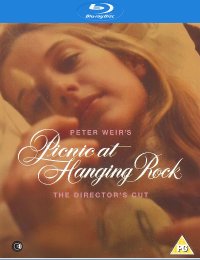
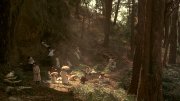
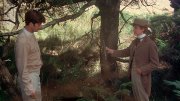
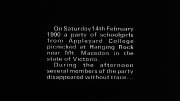
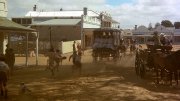
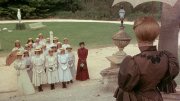
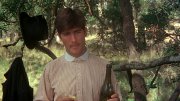
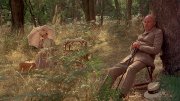

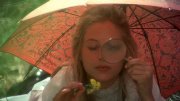
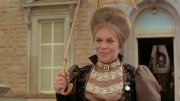
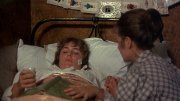
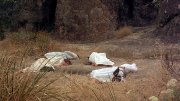
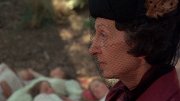
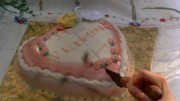

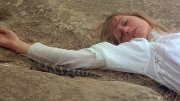
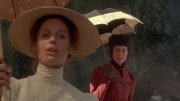







































Your Opinions and Comments
Be the first to post a comment!